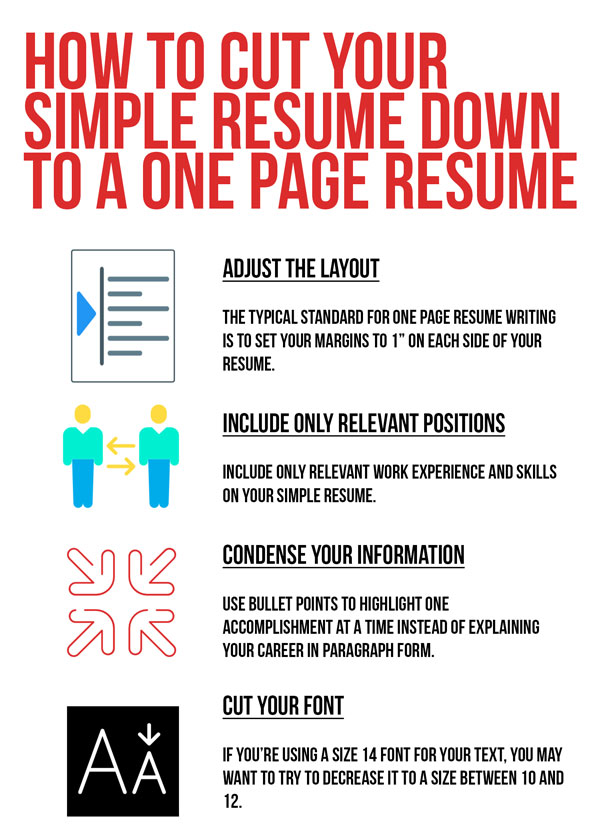There is a general consensus in today’s employment world that no resume should be longer than a page when submitting for a job application. This proves to be true for entry-level candidates and those with less than 10 years of experience. Hiring managers that are looking to fill entry and associate-level positions don’t want to waste their time reading through a lengthy resume when they can find a quality candidate with a simple one page resume layout with the same qualifications.
Though some of these candidates may have a fair amount of work experience, employers want a one page resume that is clear, concise, and quick to the point. Creating a short and effective job resume outline can BOOST your chances of landing an interview. Here, we have provided resume writing tips on how to cut your simple resume down to a one page resume after you have written and compiled all of your work experience together.

Adjust The Layout
The typical standard for one page resume layout is to set the margins of your word document to 1” on each side of your document. This creates a design that is appealing to employers and leaves a great amount of white space so the information within your one page resume does not look crammed. In certain cases where you may have a lot of important information that needs to be included, you can decrease these margins down to ½”. When decreasing the size of your margins, it is always best practices to first decrease the top and bottom margins of the page if necessary. Start with the top and bottom margins before you move to the side margins.
Include Only Relevant Positions
A hiring manager that is looking to hire for an entry-level accounting position does not want to know that you worked for a grocery store in the deli department during your college days. Focus on including only relevant work experience and skills on your simple resume. This will cut out a lot of unnecessary and irrelevant information that could extend the length of your one page simple resume and hurt your chances at getting an interview (see the importance of including relevant information in a resume here).
Condense Your Information
The utilization of bullet points in your basic resume format serves two purposes; it makes your one page resume layout look neat and it works strategically to condense the information in your resume. Use bullet points instead of paragraphs to break up the text. Use bullet points to highlight one accomplishment at a time instead of explaining your career in paragraph form.
Cut Your Font Down
If you’re using a size 14 font, you may want to try to decrease it to a size between 10 and 12. This allows you to downsize your resume while still making it readable enough for hiring managers. Aside from your name, which should be set to a minimum of 14, diminishing the size of your resume font can free up a tremendous amount of space on your resume.
